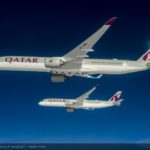Boeing and Oerlikon, a technology and engineering company, have signed a five-year collaboration agreement to develop standard materials and processes for metal-based additive manufacturing.
Additive manufacturing, more commonly known as 3D printing, is a controlled process in which material is joined or solidified to create a three-dimensional part.
Value for the industry
“This agreement is an important step toward fully unlocking the value of powder bed titanium additive manufacturing for the aerospace industry,” said Leo Christodoulou, Boeing Chief Technologist. “Boeing and Oerlikon will work together to standardise additive manufacturing operations from powder management to finished product and thus enable the development of a wide range of safe, reliable and cost-effective structural titanium aerospace components.”
Dr. Roland Fischer, CEO Oerlikon Group, added: “This programme will drive the faster adoption of additive manufacturing in the rapidly growing aerospace, space and defence markets. Working together with Boeing will define the path in producing airworthy additive manufacturing components for serial manufacturing. We see collaboration as a key enabler to unlocking the value that additive manufacturing can bring to aircraft platforms and look forward to partnering with the largest and most respected aerospace company in the world.”
3D-printed planes
Boeing and Oerlikon will use the data from this collaboration to support the qualification of additive manufacturing suppliers to produce metallic components using a variety of machines and materials. The research will initially focus on industrialising titanium powder bed fusion additive manufacturing and ensuring parts made with this process meet the flight requirements of the Federal Aviation Administration and Department of Defense.
Boeing currently has about 50,000 3D-printed parts flying on commercial, space and defence programmes. In 2017, Boeing became the first aerospace manufacturer to design and install a Federal Aviation Administration-qualified 3D-printed structural titanium part on a commercial airplane, the 787 Dreamliner.

